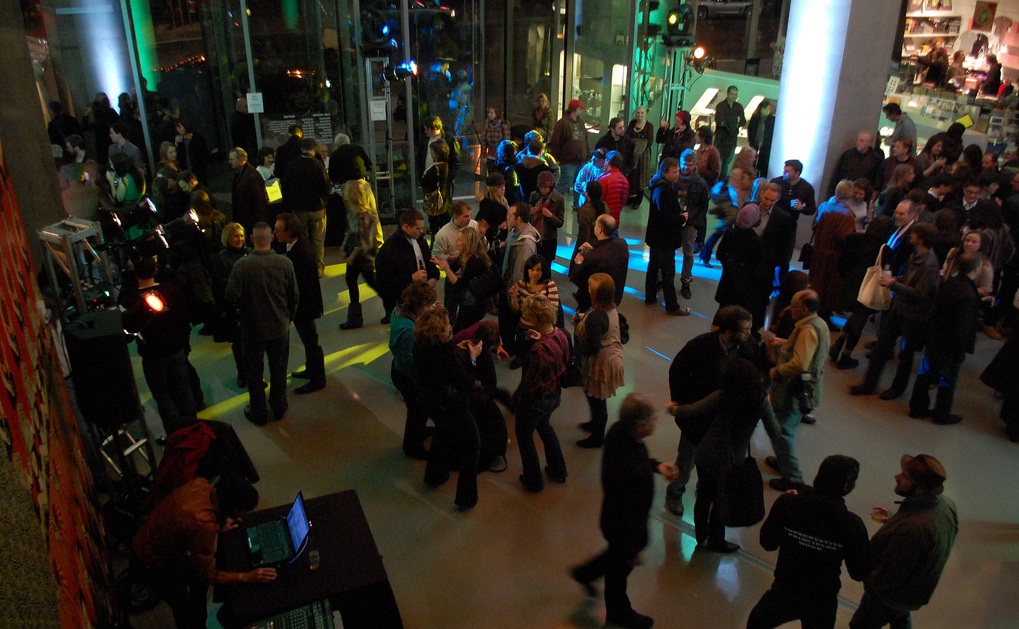The Western & Southern Open is taking place right now, and a men’s and women’s champion will be crowned this weekend in what has become one of the world’s top ten tennis tournaments.
Once finished, the tournament will have drawn hundreds of thousands of tennis fans to Mason, but more importantly, it will have given Cincinnati exposure to millions of television viewers around the United States and the world.
The tournament is a huge regional draw, and it gives the region an annual chance to make its pitch as to why people should visit, invest, or move to the region. This year, the Cincinnati USA Convention & Visitors Bureau decided to build off of Lonely Planet’s choice of Cincinnati as one of its top travel destinations for 2012. Unfortunately, however, the 30-second commercial does not come close to selling the narrative written by the independent travel guide.

There was no mention or view of the Contemporary Arts Center in the recent Cincinnati USA television commercial. Photograph by Thadd Fiala.
“Seen Cincy lately? The pretty city on the Ohio River – off the main cross-country interstates – gets bypassed by many road trippers, but it’s quietly transformed itself in the last decade into a worthy weekend getaway,” Lonely Planet wrote about Cincinnati. “Life centers around the river – much which can be seen by foot: river walkways are best on the Kentucky side, reached via a couple bridges including John Roebling’s Suspension Bridge (a prequel to his famous Brooklyn Bridge). Narrow, twisting (and steep) brick roads of the Mt Adams district lead past 19th-century Victorian townhouses and the free Cincinnati Art Museum, while the once-dangerous, emerging Over-the-Rhine, just north of downtown, is home to the Findlay Market and a sprawling collection of historic Italianate architecture.”
After reading that, someone unfamiliar with Cincinnati may be intrigued to visit the city to experience its architecture, waterfront, historic neighborhoods, and judge the stated transformation first-hand. What Cincinnati USA’s television spot showcases (see below), however, is the tried and true regional selling cards to families looking for an affordable weekend getaway.
There is nothing wrong with selling a good product to a captive audience, but if Cincinnati wants to start attracting new people and new interest, it will have to do something new.
If Cincinnati USA wants to build on the Lonely Planet mention, then they should sell the region on what Lonely Planet is pitching. Show the millions of tennis fans a scene from Over-the-Rhine on a Friday evening, Fountain Square on a Saturday night, the twisting streets of Mt. Adams, the University of Cincinnati’s Main Street, people biking across the Purple People Bridge, and shoppers at Findlay Market on a Saturday morning.
Fortunately, the Cincinnati USA commercial did pay attention to the National Underground Railroad Freedom Center which was prominently mentioned in the Lonely Planet write-up.
“Best, though, is the National Underground Railroad Freedom Center, open since 2004, on the banks of the river where many slaves escaped to freedom in the 19th century,” concluded Lonely Planet’s writers.
Cincinnati has always been an affordable place and a great place for families. This narrative has been perfected over many decades. This strong calling card should not, however, preclude the region from telling the world about a new narrative that has come to life over the past decade. It’s a story about a resurgent city focused on youthful energy, innovation, independent thought, music, and a unique urban core that is hard to match anywhere in America.
